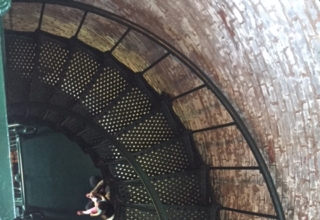
This initial version of constructivism is essentially static, for these social constructions are based on deeply rooted beliefs and assumptions of specific societies and cultures. There are specific communities that espouse their own unique ways of knowing. These communities may consist of people who are living together or people who are working together. Organizations create their own culture and their own constructions of reality. Specific ways of knowing are based on and reinforced by the community and do not allow for significant divergence among those living in the community. Furthermore, while these ways of knowing may themselves change over time and in differing situations, such changes are gradual and often not noticed for many years.
We thus find a constructivism that is static and a process of coaching that focuses on surfacing these stable, but often unacknowledged and very powerful, societal assumptions and beliefs. It is the role of the coach to challenge these assumptions and beliefs and to help clients trace out the implications of these societal constructions for their own actions as members and even leaders of these societies and cultures. As anthropologists and sociologists, organizational coaches should understand something about the culture of their society—or of a specific organization. One of us (Bergquist and Brock, 2008) recently wrote about six unique cultures that exist in most contemporary organizations. Each of these cultures has its own stable construction of reality and is resistant to change. Experts (and coaches) themselves dwell in one or more of these six cultures, hence they have their own biased perspectives that are created by and reinforced within these cultures.
Dynamic Constructivism: Contextual Interactions
While the objectivist perspective was prevalent during the modern era, and is still influencing our notions about “facts,” the static constructivist perspective often played a role as counterpoint in 20th century social discourse. This static constructivism has been a source of many challenges that have upset the modernist stance on epistemology and ethics. The static constructivists have encouraged or even forced many of us to move from an absolute set of principles to a more situation-based relativism. Even greater challenges, however, are present. A dynamic constructivism moves well beyond the stability of broad-based societal and cultural perspectives. The emergence of a dynamic constructivist perspective represents a revolutionary change in the true sense of the term—and it is poignantly represented in the perspective offered by, John D’Agata, our essayist.
Language, narratives and self: Story and performance are hallmarks of dynamic constructivism. We live in a world of constructed realities that are constantly shifting—as John D’Agata has asserted. We live in a world of language, semiotics and narratives. Language is no longer considered to be simply a handmaiden for reality, as the objectivists would suggest, nor does it construct a permanent or at least resistant reality as the traditional social constructivists would argue.
Furthermore, language is not a secondary vehicle we must employ when commenting on the reality that underlies and is the reference point for this language. The dynamic constructivists often take this analysis one step further by proposing that language is itself the primary reality in our daily life experiences. Language, originally and primarily relationship-based, assumes its own reality, and ceases to be an abstract sign that substitutes for the “real” things. Our cave is filled with language and conversations. This is reality—there is nothing outside the cave (or perhaps the cave doesn’t even exist).
Download Article
















